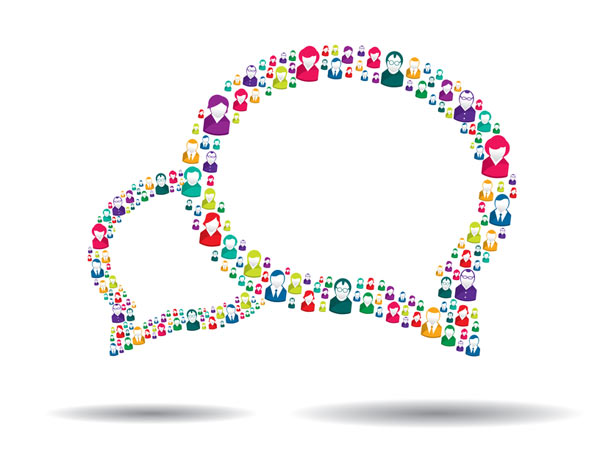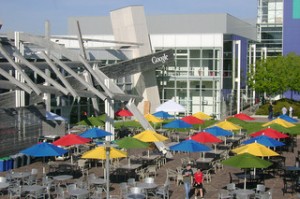
Social media allows businesses to take their products and services to the next level by actively harnessing the power of the crowd. More typically this involves turning users into unknowing promoters, but it can also be an excellent way to target strategic business partners. Incentivized campaigns on major social media outlets such as Facebook, Twitter, and Google Plus give regular users a sense of ownership and involvement in the company and its products, but there are also emerging technologies which allow businesses to source advice and skills from the crowd.
Let’s talk about some of the ways social media can help attract the best and brightest to help you create the best possible product for your customers.
Crowdsourcing
‘Crowdsourcing’ is, in essence, using savvy members of your social sphere to help shape a product through design input and productive feedback. Think of it as holding a brainstorming session with an unlimited number of planners.
When seeking strategic partnerships in developing your new product, the online community contains countless individuals you might like to use as ‘co-creators’ – (user-groups as a secondary but still important aspect). Desirable co-creators are industry pros who can bring something to your table. Since parallel evolution or conception is a common situation in business today, being able to harness the input of your peers means that you can work together for a greater product.
- Branch.com is a good example of crowdsourcing on social media. A user expresses an idea, suggestion, or concept to a circle of industry experts using the Twitter interface. One popular conversation was the ‘save symbol’ discussion, started by design technologist P.J. Onori. This discussion swelled to include over twenty people and deconstructed the functionality and design of the existing save symbol. Because of its crowd nature, every person in the discussion became a co-creator for the “concept” save symbol in progress.
- Chaordix.com is another crowdsourcing platform that breaks its sourcing communities into ever-increasing, broader circles. At the top and hence the smallest are business leaders and producers. In the middle are brand and idea groups, which discuss ways to make the products and services better and get the message out to the maximum number of potential customers. At the bottom, but still hugely important are the user-groups, or the potential customer/regular Internet user. Using a combination of analytic and CMS tools coupled with user incentives and feedback, Chaordix creates strategic dialogues between the top management levels and the consumer to permit more people to take a hands-on approach in shaping new products and services for public consumption.
- Rounding out this list is Sparked.com, whose integrated rewards system creates passionate “brand evangelists” and co-creators. Its Customer Advisory Board consists of everyday users who are willing to discuss their opinions concerning products and services to analyze the best and worst of any business. Sparked.com also touts its employee empowerment features, which allow employees from all levels of a company to take on co-creator and strategic partnership roles within the company as related to given products.
The common factor in these services is the ability to give the consumer greater ownership and a more direct role in shaping the products and services they use, as well as the businesses they buy them from. The other advantage of crowdsourced intelligence is that for a fraction of the cost of a traditional digital advertising campaign, the crowd can feel involved and consequently more excited about a product. Natural, this will lead to greater social sharing and more traffic and eventually a higher conversion rate. Creating a buzz at the source means that users hear about the product from their friends, family, and their online community—in short, people they trust.
One of the most prominent brands built entirely from a crowd-sourcing perspective is Threadless, a service which encourages artists to design artwork that will eventually be used for t-shirts and other products. The best designs are decided by user-vote, ensuring that the entire process is completely sourced from the crowd. It’s a great way to make partners of both designers and t-shirt fans.
Crowdsourcing is also an excellent way to encourage co-creation and strategic partners through crowdfunding, such as through Kickstarter. By encouraging small investors in new projects, the company’s R&D budget is not tapped as heavily and the investors see a real return on their investment in the form of something new that they helped create, either through conceptual input, cash infusion, or both.
Treating User-Groups as Partners
Clever brands are starting to realize the power of the crowd as a marketing tool. By treating your users as marketing partners, you can create communities which perpetuate your message simply because they enjoy doing it.
- RadioShack found a way to harness the power of Twitter with its #kindofabigdeal hashtag campaign. The premise was simple: A number of Verizon cell phones were arrayed on a table. As users Tweeted the hashtag, the phones would vibrate. The phones were ultimately awarded to the last person who made each one vibrate. In addition to promoting the RadioShack/Verizon pairing, it also generated a huge amount of online talk, netting over 80,000 mentions on this hashtag alone. Unwittingly, every contestant had become a promoter. By creating an online community, RadioShack had used the crowd as a strategic partner.
- Google+ has not been absent from this arena, either. Its powerful community based on ‘Circles’ allows people with common interests to connect and share. Notwithstanding the fact that this could be used to create groups of project collaborators (see above), being allowed into someone’s social circle is a huge endorsement of trust. Inspiring people to share your content is then much easier, and can have a lot more impact.
- Facebook’s ubiquitous ‘like’ button allows users to show preference for companies, entertainers, authors, or products. Kohl’s department store took advantage of this in 2011, creating a Facebook campaign that allowed users to vote for twenty different schools who would each receive $500,000 in donated funds. This $10,000,000 fundraising initiative had the advantage of allowing users to do something altruistic and simultaneously give themselves access to special savings and coupons available only through Kohl’s’ Facebook page. People love to be part of a cause, so harnessing the power of an altruistic community was hugely beneficial in this campaign.
Ultimately, getting the public engaged in your company as co-creators and long-term strategic partners is becoming the best way to ensure profitability and stability. Using social media as a crowdsourcing method allows you to easily draw in discussion, design input, and brand advice from all strata of the business-oriented internet. Your company can polish its image, give customers what they really want and need, and do it all more efficiently with far less expense. In addition, making users feel part of your brand’s community can strengthen their involvement in the project. Used properly, social media has never been more powerful for building and promoting a product.
‘This article was supplied by Joe Shervell, a keen blogger and social marketing enthusiast. He writes for www.datadial.net, a London-based Internet Marketing Agency.
Lucy is Editor at Corporate Eye


